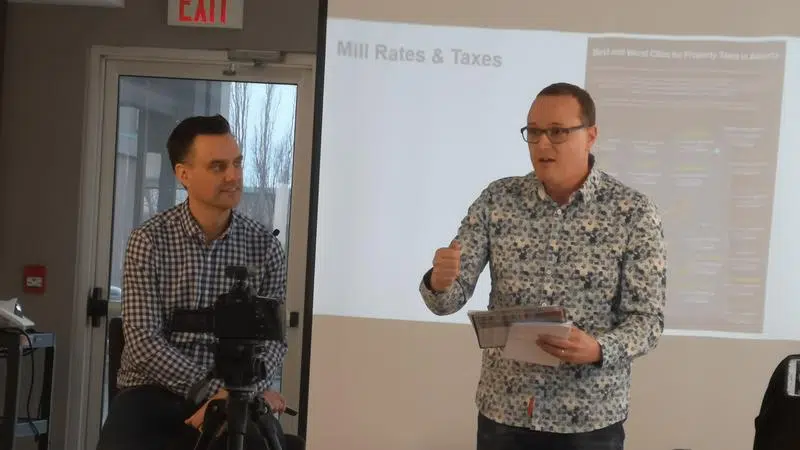
Mayor Given goes in-depth on high residential property taxes
Mayor Bill Given isn’t shy in admitting that Grande Prairie has the highest Residential Taxes in the province.
Given presented at a Realty Glimpse Live luncheon on Thursday, addressing how taxes work in the Swan City. His message to those in attendance was simple and direct: that the City relies far more on residential property taxes, as opposed to non-residential properties.
Given explained that the tax base is set up in such a way, as to invite business to set up operations in Grande Prairie, while at the same time making it more desirable for specialists (like doctors) to move to the city. He does say though that the city is not locked into that structure moving forward.
